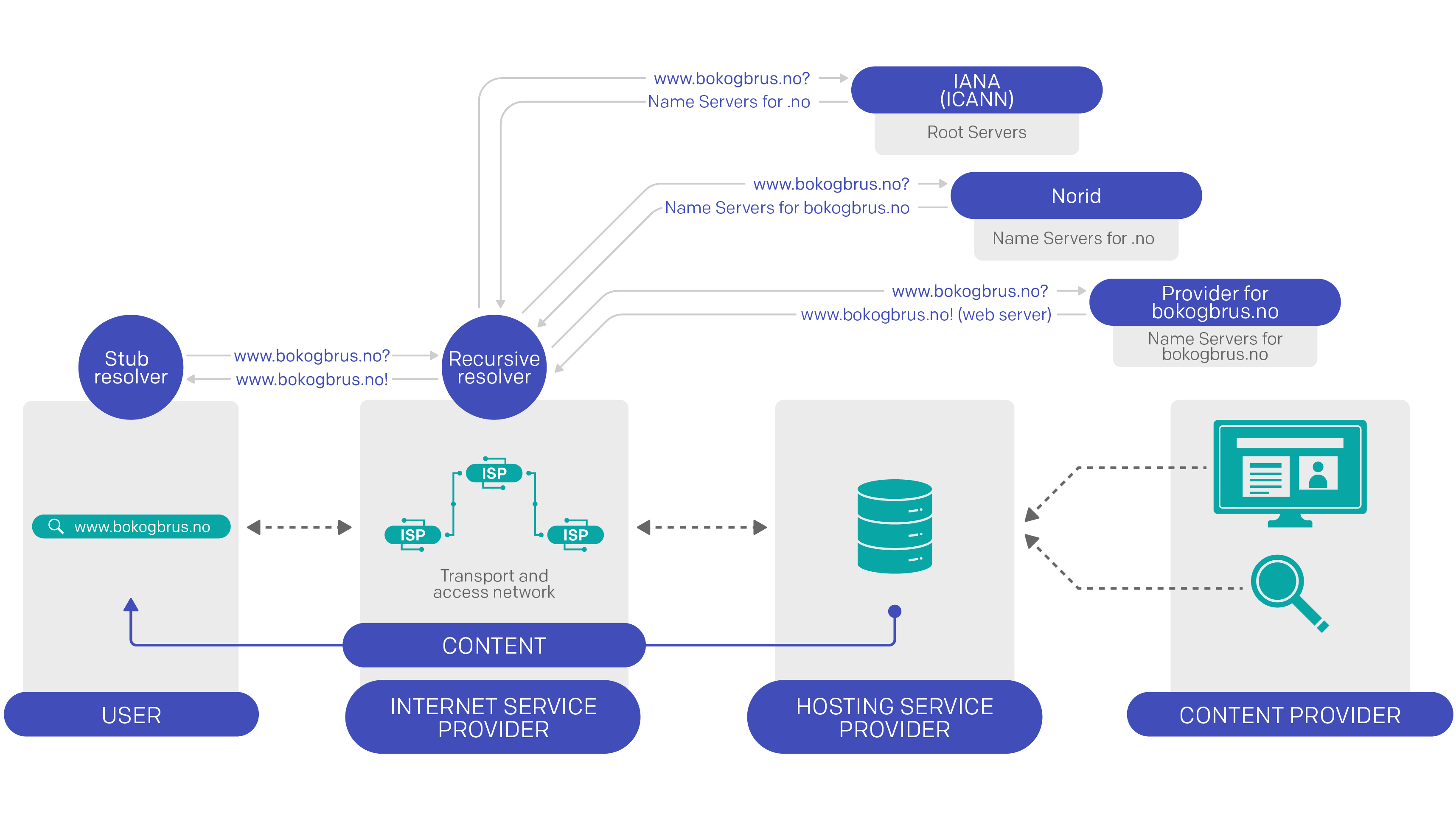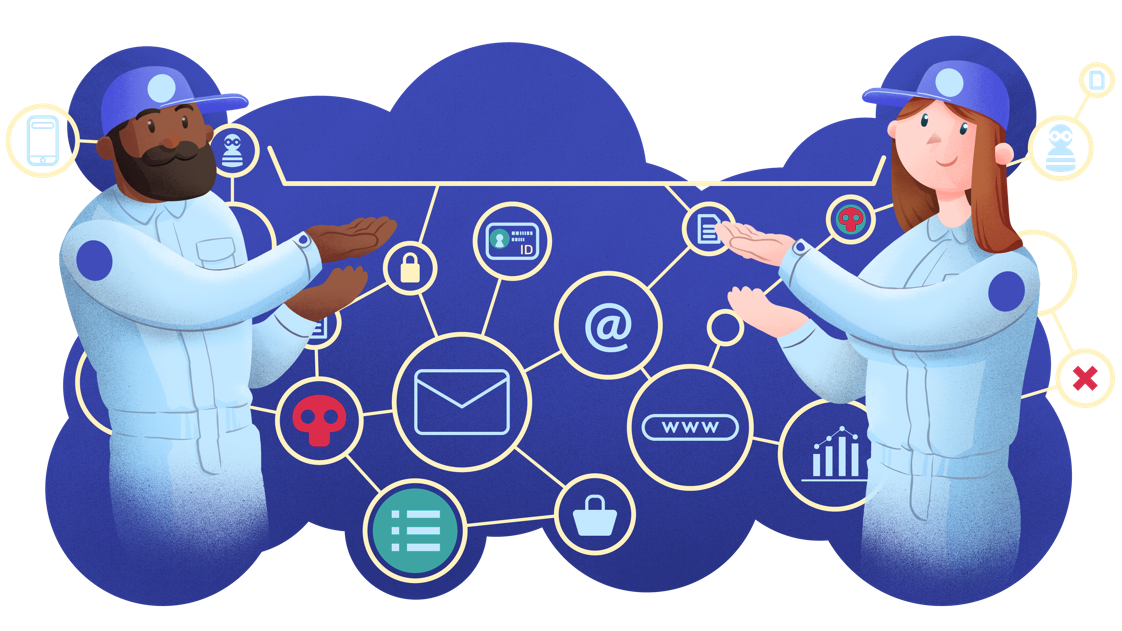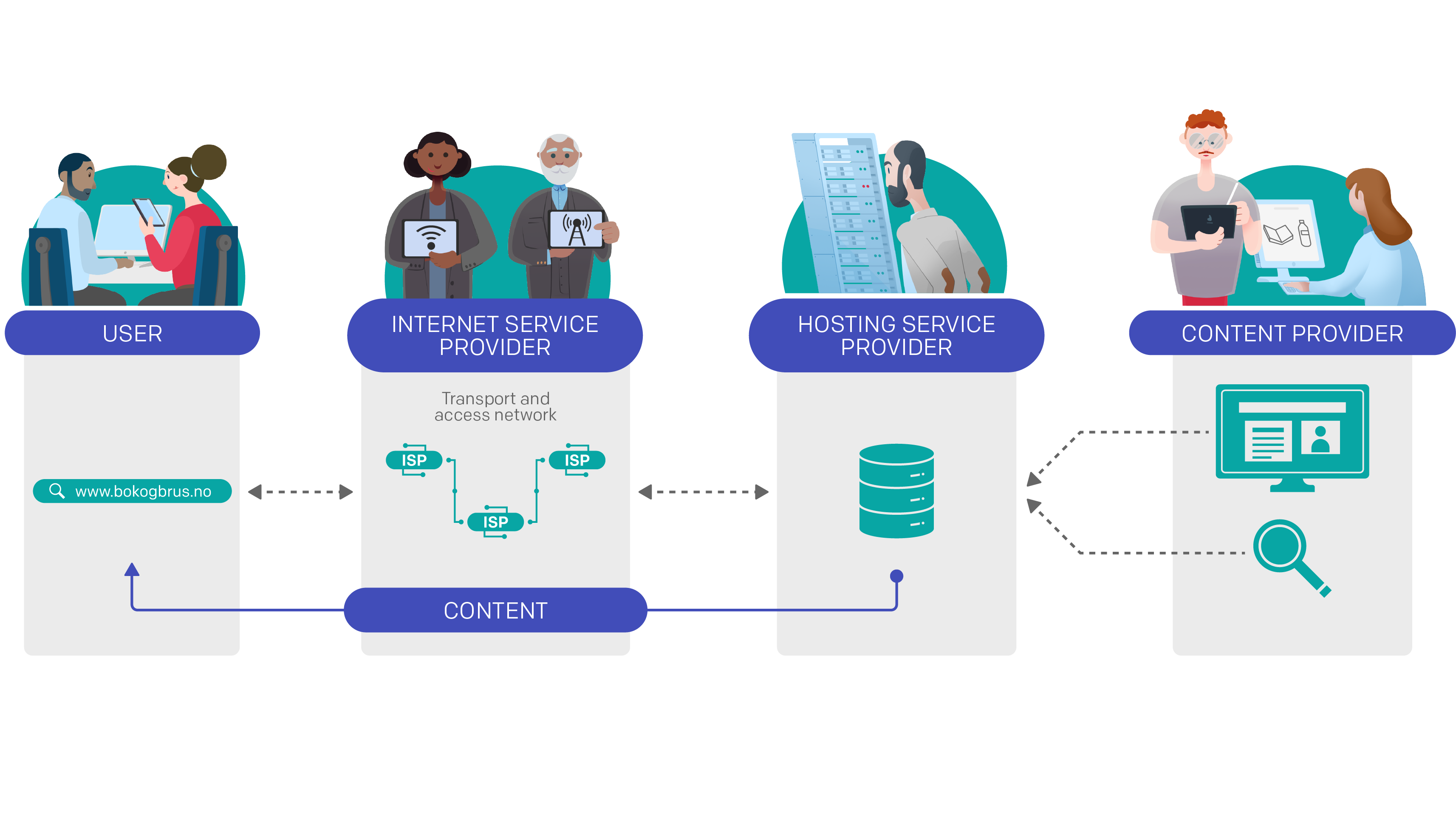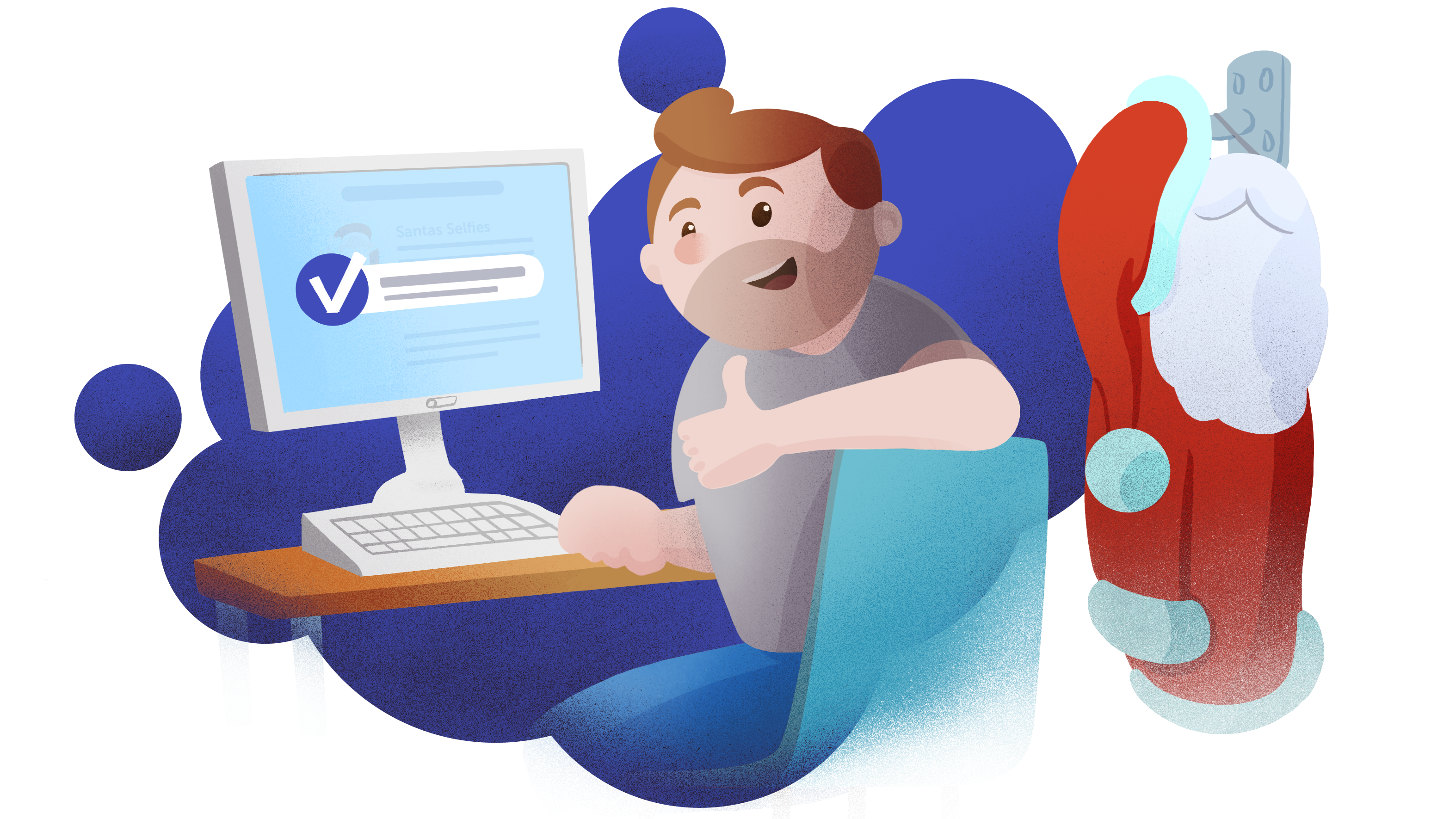Domain name? Do you mean website?
The short answer is no, the domain name is not the same as your website. But the domain name can lead you to your website - like a sort of online road sign. To navigate the internet, we use domain names. They’re much easier for humans to remember than IP addresses.
It’s easier to remember nrk.no than 23.102.50.11.
NRK is the Norwegian Broadcasting Corporation [Norsk rikskringkasting]
Many different actors are involved in making content available
Content is made available online by a content provider uploading it to a server connected to the internet. A content provider can use their own infrastructure to make the content available or utilise a hosting service provider that offers storage and publishing of the content on its servers
When a user visits a website, the content of the website is sent from the server where it is stored to the user via the internet. The internet connection is provided by an Internet Service Provider (ISP). Usually, multiple ISPs are involved in transporting the content from the server it is stored on to the user. The ISPs do not have insight into the specific content being transmitted over the internet and are only responsible for ensuring that the information is sent and received by the correct user.
The road to the correct address: the Domain Name System
To access content or other services on the internet, the user's machine must know the IP address of the server where the content is stored or the service is offered. This address is retrieved by querying the global Domain Name System (DNS).
Each domain name has a set of machines that respond to queries about addresses under the domain name. These machines are called name servers. It is the name servers for the individual domain names that provide the information that enables users to connect to servers offering content or services over the internet.
Information about which name servers are associated with a domain name is queried from the name servers of the top-level domain where the domain name is registered. Norid provides the name service for the Norwegian country code top-level domain .no. Thus, we are one of several players that ensure it is technically possible to make queries in the global domain name system.
The IP address to the server with content is retrieved by looking it up in the domain name system (DNS)

Read more about how the DNS works here
Santa Claus does not have a .no domain name
One of the factors influencing the type of "neighbourhood" a top-level domain fosters, is the requirements imposed on those wanting to register domain names.
Anyone who wants to register a domain name under the Norwegian top-level domain must identify themselves, by providing either
- an organisation number registered in the Norwegian Register of Business Enterprises, or
- a national identity number registered in the National Population Register
And yes, we check. Santa Claus doesn’t have a .no domain name.
Some of the requirements for registering a .no domain include...
- Businesses and other entities must be registered in the Norwegian Register of Business Enterprises
- Individuals must be registered in the Norwegian National Population Register
- You must have a Norwegian postal address
- There are also limits to how many domains one party can subscribe to: Five for individuals and 100 for businesses
Norid verifies that the domain name subscriber – the organisation or individual that is granted the right of use of a domain name – exist in the official registers. However, it is the registrars, who have direct contact with their customers, and who know them and assist them with applying for a domain name and managing their registrations.
These requirements ensure that each .no domain name is registered to a real individual or organisation, who is responsible for how the domain is used.
Illegal content online
The domain name subscriber is responsible for how the domain name is used. They decide whether the domain name will be used to offer services, and if so, which services will be provided. The range of services can vary widely – from simple static websites to platforms offering downloadable content, online games, blogs, and portals such as altinn.no.
Registering a domain name grants the domain subscriber the right to use the domain name. The subscriber is responsible for how the domain name is used.
Electronic Communication Act § 12-7 [our emphasis]
In cases of cybercrime or other unwanted online activity, it is usually the services themselves – not the domain name – that pose the problem. Websites and emails may contain illegal content or be used to facilitate unlawful activities, such as fraud attempts.
Just as in the offline world, law enforcement and other public authorities are legally mandated to take action against illegal content and services on the internet. The most effective response in such cases is to remove the content at its source or shut down the service itself. However, this is not always feasible.
As a last resort, and when proportionate, action may be taken against the domain name. Such measures require a process that safeguards the legal rights of the parties involved. In Norway, the police and the prosecution has the authority to seize digital content or domain names, in accordance with Section 203 of the Criminal Procedure Act.
In addition, certain consumer protection authorities have the power to order the removal of digital content. However, if they seek to take action against a domain name, the matter must be brought before the courts to ensure due process and the protection of legal rights. Only the Norwegian Medical Products Agency can issue orders directly to Norid.
Norid does not judge whether the content or use of a domain name is illegal. However, we cooperate with authorities in order to ensure that there are clear and predictable procedures available for those who do have a mandate to deal with illegal content or services.
Norid does not monitor the content of websites and does not have the authority to take action against websites that may appear to violate the law; that responsibility lies with the police and the judicial system.
Supreme Court Decision HR-2009-01692-U, referred in HR-2019-1743-A
Read more about illegal content on the internet and Norid's guidelines for authorities that can take action against domain names
In summary, the Norwegian Model – the combination of registration requirements, a robust regulatory framework, and the efforts of Norid, registrars, and public authorities – plays a vital role in maintaining the .no domain as a safe and well-regulated online "neighbourhood".







